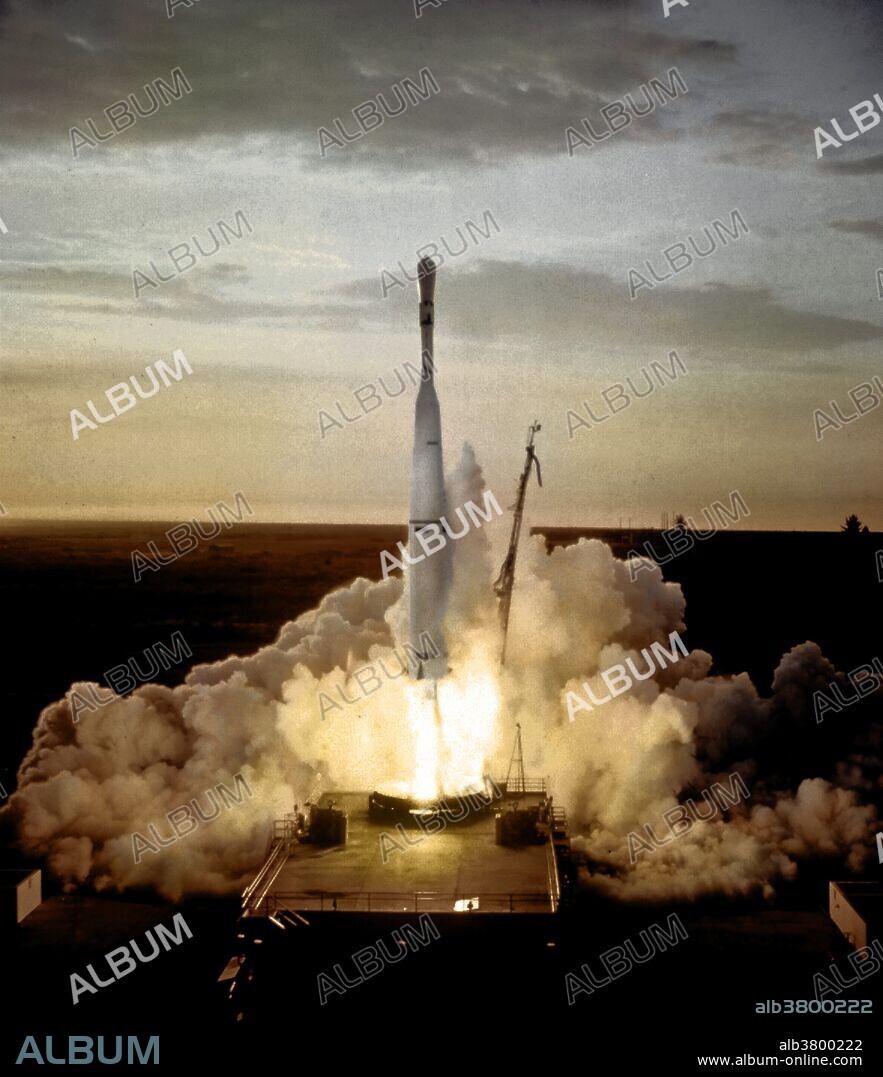alb3800222
TIROS I Launch, 1960

|
Ajouter à une autre Lightbox |
|
Ajouter à une autre Lightbox |



Avez-vous déjà un compte? S'identifier
Vous n'avez pas de compte ? S'inscrire
Acheter cette image

Titre:
TIROS I Launch, 1960
Légende:
Voir la traduction automatique
TIROS I was the first successful low-Earth orbital weather satellite, and the first of a series of Television Infrared Observation Satellites. The TIROS-1 spacecraft was launched by NASA and partners on April 1, 1960, from Cape Canaveral, Florida, in the United States. The TIROS Program's first priority was the development of a meteorological satellite information system. Weather forecasting was deemed the most promising application of space-based observations. The satellite, which weighed 270 pounds, was specifically designed to test experimental television techniques that would lead to a worldwide meteorological information system. The spacecraft carried two television cameras, a magnetic tape recorder, timer systems, transmitters and a power supply. Early photographs provided new information on cloud systems, including spiral formations associated with large storms, immediately proving their value to meteorologists.
Crédit:
Album / NOAA/Science Source
Autorisations:
Modèle: Non - Propriété: Non
Questions sur les droits?
Questions sur les droits?
Taille de l'image:
3492 x 4050 px | 40.5 MB
Taille d'impression:
29.6 x 34.3 cm | 11.6 x 13.5 in (300 dpi)
Mots clés:
AMÉRICAIN • ANNEES 1960 • ANNÉES 60 • ANNEES SOIXANTE • BATEAU A MOTEUR • CÉLÈBRE • CELEBRITE • ENVOL • ÉVÉNEMENT • EXPLORATION SPATIALE • LANCEMENT (FUSEE) • METEOROLOGIE • NASA • RECHERCHE • TECHNOLOGIE • XXE SIECLE
 Pinterest
Pinterest Twitter
Twitter Facebook
Facebook Copier le lien
Copier le lien Email
Email
